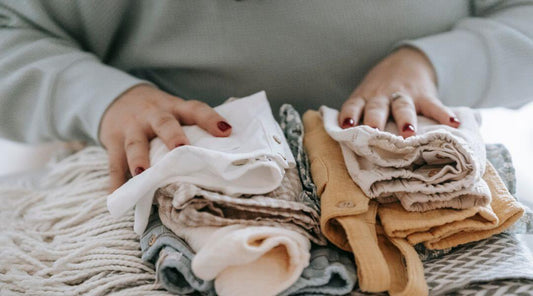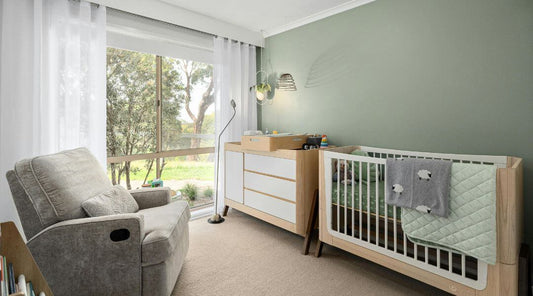Designing a kids' room goes beyond just choosing the right furniture and décor; it's about creating a functional space that sparks creativity, encourages play, and provides a sense of comfort. Whether you're dealing with a small nursery or a spacious playroom, implementing thoughtful layouts can transform your kids' room into a sanctuary of fun and functionality. Here’s a comprehensive guide on how to design a practical kids' room layout while ensuring it remains stylish and enjoyable for both parents and their little ones.
Understanding the Needs of Your Child
Before you embark on the journey of designing a kids' room, it's crucial to understand the basic needs of your child. Children, especially toddlers and preschoolers, thrive in environments that are safe, engaging, and organized. Consider the following aspects:
Safety First
Kids are naturally curious and tend to explore their environment. Therefore, it is essential to create a room that is free of hazards. Here are some safety tips:
- Anchor larger furniture pieces to the wall to prevent tipping.
- Use rounded furniture edges or corner protectors to avoid accidental bumps.
- Ensure that all electrical outlets are covered.
Space for Play and Learning
A well-used kids' room combines areas for both play and study. Your layout should hence prioritize:
- A designated play area with ample floor space for toys and activities.
- A cozy reading nook filled with books and cushions.
- A study corner equipped with a mini desk and chair for those early learning years.
Optimizing the Layout

Once you've assessed your child's needs, it’s time to focus on the layout. Here are some essential elements to consider when optimizing space:
Zones of Functionality
Categorize the kids' room into different functional zones. This will not only organize the space but also help your child understand where to play, learn, and sleep. Here’s how you can define these zones:
- Sleeping Zone: Place the bed in a corner away from the door to provide a sense of security and privacy. Choose a bed that allows easy access for both child and parent.
- Play Zone: Lay down a colorful rug in the center of the room where most play activities will happen. A low storage unit can be placed nearby for easy access to toys.
- Work Zone: Keep a small desk in a corner that’s well-lit, ensuring it doesn’t get too cluttered. Add storage solutions to organize art supplies and learning materials.
Utilizing Vertical Space
Many parents underestimate vertical space, which can be a game-changer in a kids' room layout. Here are some tips to maximize this area:
- Install shelves for books, toys, and storage bins to keep the floor space clear.
- Use hooks on walls or the back of doors for clothing items and accessories.
- Consider a loft bed to free up floor space for play while still maintaining comfort while sleeping.
Choosing the Right Furniture
Furniture selection is vital when designing a functional kids' room. It must serve the purpose of the space while also being safe and inviting. Here are some key considerations:
Size Matters
Choosing appropriately sized furniture is essential—too bulky and it will overwhelm the space, too small and it may not be functional. Look for pieces that can grow with your child; many options come with adjustable features.
Multi-functional Furniture
Investing in multi-functional furniture can save space and add versatility. Some ideas include:
- Beds with built-in storage drawers.
- Ottomans that double as storage bins.
- Desks that can be folded away when not in use.
Color Schemes and Themes
The color palette and theme of the room contribute greatly to its atmosphere. Choose hues that are stimulating yet soothing:
Color Choices
Bright colors can energize a space, while softer tones promote calmness. You may want to consider:
- Painting two walls in bold colors for a dynamic look.
- Keeping larger pieces of furniture (like beds or dressers) in neutral tones.
- Using decor elements for splashes of color instead of permanent changes.
Thematic Elements
Incorporating a theme can tie the elements of the room together. Whether it be animals, space, or fairy tales, make sure it resonates with your child:
- Add themed wall decals or murals.
- Select bedding and curtains that align with the theme.
- Incorporate playful elements like a tent, small bean bags, or themed cushions.
Keeping it Organized
Once you've got your layout and furnishings sorted, maintaining organization is key. Here are some strategies to keep the children's space tidy:
Storage Solutions
Use a creative approach to storage by implementing various solutions that are accessible for children. Consider:
- Baskets and bins to organize toys by category.
- Drawer organizers to separate clothes and accessories.
- Labels on storage solutions to encourage children to partake in tidying up.
Sanitize for Health
As children spend so much time in their room, it’s essential to maintain a clean environment. One practice to incorporate is to regularly sanitize a used mattress to eliminate allergens and bacteria. Here’s how you can do it:
- Vacuum the mattress thoroughly.
- Sprinkle baking soda and let it sit for a few hours before vacuuming it again.
- Use a fabric-safe disinfectant spray for an extra layer of cleanliness.
Personal Touches
Once the functional aspects of the room are set, it’s time to add personal elements that reflect your child's personality. Personal touches make a room feel like home:
Incorporate Artwork
Let your child express their creativity by displaying their artwork. Use clipboards or frames that can be easily updated as they create new pieces. This not only decorates the wall but also boosts their self-esteem and pride in their achievements.
Interactive Features
To make the space even more engaging, consider including interactive features tailored to your child’s interests:
- A chalkboard wall for doodling and practicing writing.
- A gallery wall of family photos to connect and reminisce.
- Personalized décor items like name plaques or wall hangings.
Final Flourish: A Room to Grow
By following these design strategies, you will set up a functional and stimulating kids' room that grows with your child. Let the layout inspire learning, creativity, and play while ensuring a cozy space for rest and reflection. With the right balance of safety, organization, and personal flair, you'll create a room that your child will cherish—and thrive in—for years to come!
Explore another user's Shopify store by clicking here. Please note that this is a promotional link, and we assume no responsibility for the content on the linked store.








